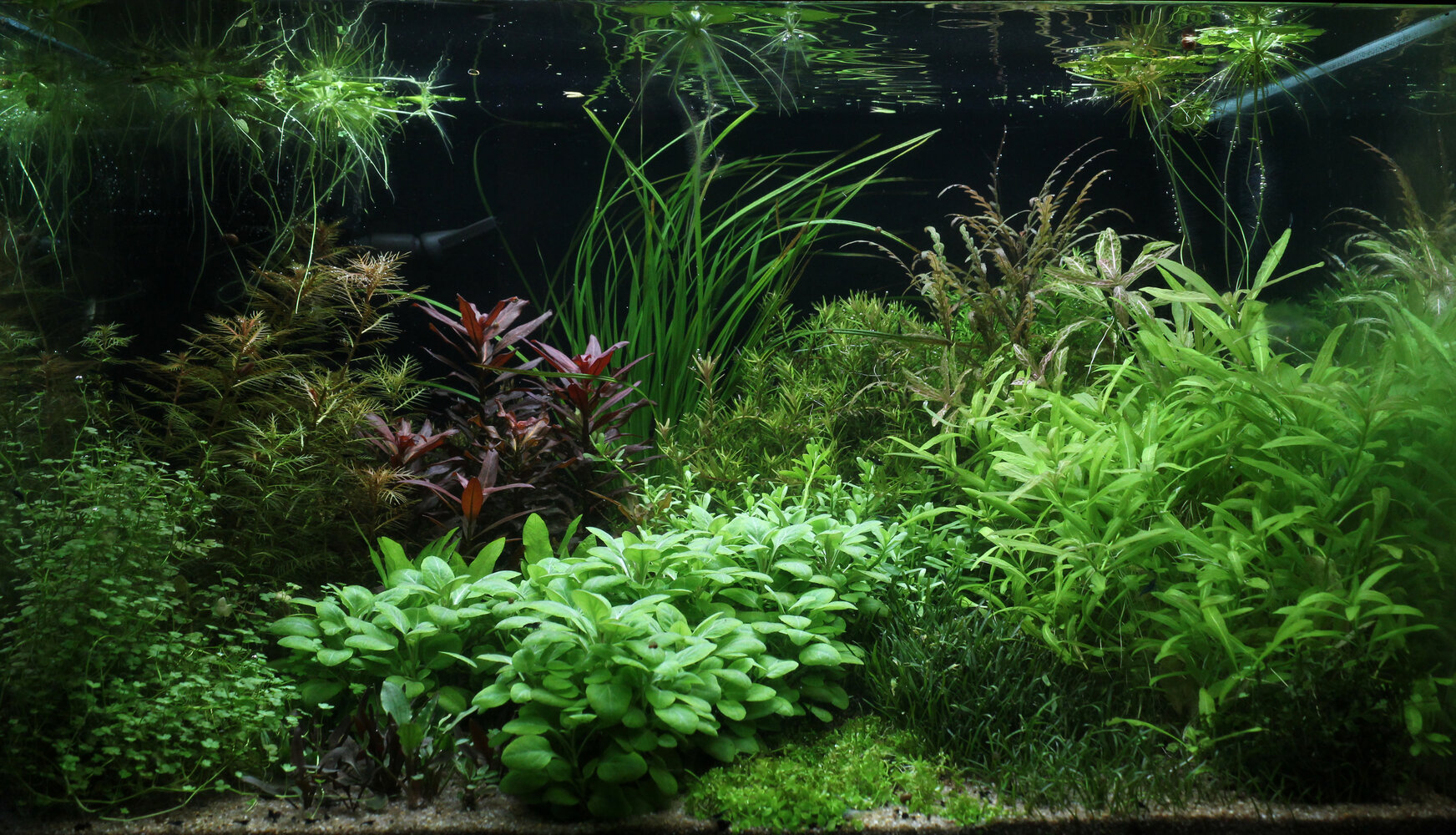A quick update.
In the 160l tank not much interesting is happening. The cord in the left corner is now hidden by the plants, the one in the middle will be hopefully also hidden by the rotalas soon.

And the tank has new inhabitants. The older cypris were moved to the 900l tank, and the new babies now go to a non-CO2 tank. These Swabwa resplendent fish are my new favorites:

In the Dutch tank, I have put a sponge filter on the intake of the powerhead. In a few days, it has made a huge difference in water clarity. The tank starts to look like I imagined at the start, but still needs some small details, like the barely visible H'ra in the back, the Nesaea gold in the left (not visible yet), and the Hygrophila corimbosa. They all need to grow, hopefully, they will. I like the corimbosa already, it is a little bit differently colored than the lobelia before it, making some contrast there.

I should put in some fish, but they would probably ruin my Amano shrimp-raising plans. I am thinking about some blue neon tetras. Small enough to have a group of them, and simple colored enough to balance out the variety of the plants a little bit. My favorite would be a single nice betta though, but the water temperature is probably a little bit too cold for that fish, 23 ˚C.
In the 160l tank not much interesting is happening. The cord in the left corner is now hidden by the plants, the one in the middle will be hopefully also hidden by the rotalas soon.

And the tank has new inhabitants. The older cypris were moved to the 900l tank, and the new babies now go to a non-CO2 tank. These Swabwa resplendent fish are my new favorites:

In the Dutch tank, I have put a sponge filter on the intake of the powerhead. In a few days, it has made a huge difference in water clarity. The tank starts to look like I imagined at the start, but still needs some small details, like the barely visible H'ra in the back, the Nesaea gold in the left (not visible yet), and the Hygrophila corimbosa. They all need to grow, hopefully, they will. I like the corimbosa already, it is a little bit differently colored than the lobelia before it, making some contrast there.

I should put in some fish, but they would probably ruin my Amano shrimp-raising plans. I am thinking about some blue neon tetras. Small enough to have a group of them, and simple colored enough to balance out the variety of the plants a little bit. My favorite would be a single nice betta though, but the water temperature is probably a little bit too cold for that fish, 23 ˚C.











